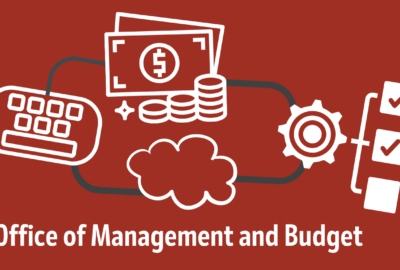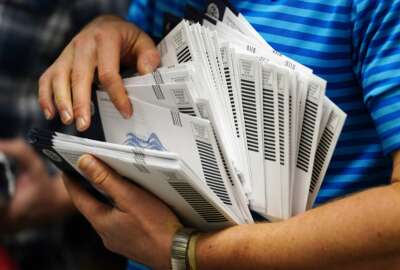How an EPA team helped clean up a giant fire mess while respecting local culture
A team from the Environmental Protection Agency had the task of neutralizing and removing toxic ash in Lahaina.
Nearly a year after wildfires in Maui destroyed 2,000 buildings and caused billions in damage, the town of Lahaina is on the mend. But after the fire and before anyone could do anything else came a massive cleanup. A team from the Environmental Protection Agency had the task of neutralizing and removing toxic ash. For their work, Pete Guria, Steve Calanog and Tara Fitzgerald are finalists in this year’s Service to America Medals program. Tara Fitzgerald joined the Federal Drive with Tom Temin to discuss the important work completed, all while respecting local Hawaiian culture.
Interview transcript:
Tom Temin Tara Fitzgerald joins me now. Ms. Fitzgerald, good to have you with us.
Tara Fitzgerald Thank you, Tom.
Tom Temin What caused EPA to go over there? Tell us the process by which you got deployed from, I guess you’re based in San Francisco?
Tara Fitzgerald Yes. So, we are based in San Francisco. EPA regional headquarters are in San Francisco, but Hawaii is part of region nine. So, it’s part of our area we work in. And the process is really that when the President declares a national disaster, and FEMA begins to look to find people to start the cleanup process, EPA is one of the federal agencies that is tasked to do the work. So, we do what’s called household hazardous waste cleanup, and other tasks as needed under the Stafford Act.
Tom Temin Alright, so what did you see and find when you arrived there?
Tara Fitzgerald Unfortunately, EPA region nine has done quite a few cleanups for fires throughout our region, mostly in California. And I think that no one was really prepared for it to happen in Maui in Lahaina, it was quite a shock. And to see the just the whole area, you know, that had been destroyed was always, it doesn’t really matter where it is, it’s always a difficult thing. But what we saw is that there was a lot of work to be done, we needed to move quickly to get the process started so that things can work as, things can go as fast as possible for rebuilding. And, so, we just got on the ground and worked.
Tom Temin Now, the houses that were destroyed, these are not your standard Washington D.C. or Marin County suburbia, right? These were different types of structures, mostly?
Tara Fitzgerald Lahaina, it’s an old town, has so much history. So, you know, there were a lot of residents and commercial buildings that were pretty much the same types of structures, but they were just completely exposed to the ocean. So, there’s a lot of concern about the ash from the structures moving away from the burn area.
Tom Temin Sure. And tell us more about the toxicity and the danger of the ash. Because when you think of burned up wood and stuff, it doesn’t sound particularly dangerous to health, but there was more in this ash than you might expect.
Tara Fitzgerald EPA did conduct soil stabilization by applying a stabilizer to the household, to the, basically, the human footprint. So, it’s really the building’s personal objects, cars. I mean, all these things that we keep in our homes that when they’re not burned, you know, aren’t putting us at a huge risk. But, once they become ash, it’s a considerable issue. And, really, EPA’s mission was to make it safe for that all of that to be removed. So, we removed the household hazardous waste, checked for certain hazards, and then once that happened, then the Army Corps could come in and take away that building footprint.
Tom Temin Sure. And your citation mentioned, in particular, there were lithium batteries ashed.
Tara Fitzgerald Yes, and that was mainly from a safety hazard, because if they weren’t fully destroyed, they remained a fire hazard. And also, you know, potentially releasing gases when they were being moved. So, this was the first time that EPA really encountered so many that we had to come up with a process to take care of them. And they also can’t be shipped away from Hawaii to the mainland for recycling. So, we had to come up with the process to make them not batteries anymore, so they could be shipped off and now that material’s being recycled and reused.
Tom Temin We’re speaking with Tara Fitzgerald. She’s an on-scene coordinator in the San Francisco office of the EPA, and also a finalist in this year’s Service to America Medals program. And the other concern that is stated and something you had to deal with was the cultural preservation and cultural norms of the people of Lahaina that were ultimately the most affected by all of this.
Tara Fitzgerald Ultimately, this was another first for the EPA that the people on the ground who came in first, particularly my coworker, Chris Myers, had some ties to Maui. Immediately we knew as EPA that we needed to get ahead of working with local people to ensure that once we started the work, which we had only about a week or two weeks to get started, we needed to be ready and we got a cultural monitoring plan in place working with with a local group, a local company that does that work, and we just really showed up to the community meetings. We had a large team of community resource specialists that went out and really did the work. And I was happy to see that we, it feels like we were able to honor everything that we needed to do and still get the work done.
Tom Temin Well, give us an example of something that might need to be honored in Lahaina in cleaning up ashes and destroyed buildings that maybe is different from what you might encounter at a fire in Levittown.
Tara Fitzgerald Just the historical significance of the Lahaina in particular. There were so many, just, cultural resources that needed to be preserved, that we don’t have records on. So, we needed to work with people who knew where they were. And there are also burial areas that are just right in the residential places. Now, we don’t keep those records, we don’t know where those are. We need to work with the people who know where it is to ensure that we’re not going on those areas. That’s really why we had monitors on every team.
Tom Temin Sure. Were there important, aside from burial grounds, cultural pieces that you might not have recognized that survived the fire that you might have encountered and maybe tossed if you didn’t know, oh, don’t toss this thing?
Tara Fitzgerald Absolutely. I think it would have been more moving them or walking on them in order to find the the waste that we were looking for. And it’s also been important that it’s marked out, and so it’s not removed later.
Tom Temin Sure. And how long did all this take? And how did you live while you were there?
Tara Fitzgerald We actually, you know, lived in nearby hotels with a lot of the displaced residents, because everyone was essentially moved out of Lahaina. So, we were living fairly close by, some of us in the areas that weren’t damaged. But it took about, so, we started in August, and our mission assignment ended at the end of December, on December 21. We finished up our last removal and soil stabilization.
Tom Temin So, you lived in Hawaii, thousands of miles from your home, for four months.
Tara Fitzgerald We did. Some of us, you know, were able to come back and forth. But yeah, I spent about, over two months there.
Tom Temin What’s it like living two months away from home? I mean, you’re still doing your daily work, so to speak, for the agency. But it must have been disorienting in some level.
Tara Fitzgerald You know, it’s something that we actually try, because we know that we’re going to be tasked with this work, we try to get ahead of it. I feel like the community in Hawaii and working with everyone actually kind of made us better at taking care of each other. So, it was, in a way, very positive.
Tom Temin And did you at least get to experience a little of the traditional Hawaiian culture, in between all of the work and not eat just MREs, you know, from the Army or something?
Tara Fitzgerald We did, but we were able to go on a walk that was sort of a few months into it, that was organized by the local community. And we were able to walk with other agencies and the community on a kind of an honoring of the people and the things that were destroyed.
Tom Temin Sure. Any plans to go back in say, five years, just to see how it all came out?
Tara Fitzgerald Oh, I hope to. Yes, absolutely.
Tom Temin Tara Fitzgerald is an on-scene coordinator in the San Francisco office of the EPA. Thanks so much for joining me.
Tara Fitzgerald Thank you.
Tom Temin And she along with Pete Guria and Steve Calanog, are finalists in this year’s Service to America Medals program. We’ll post this interview along with a link to more information at federalnewsnetwork.com/federaldrive. Subscribe to the Federal Drive wherever you get your podcasts.
Copyright © 2024 Federal News Network. All rights reserved. This website is not intended for users located within the European Economic Area.
Tom Temin is host of the Federal Drive and has been providing insight on federal technology and management issues for more than 30 years.
Follow @tteminWFED






